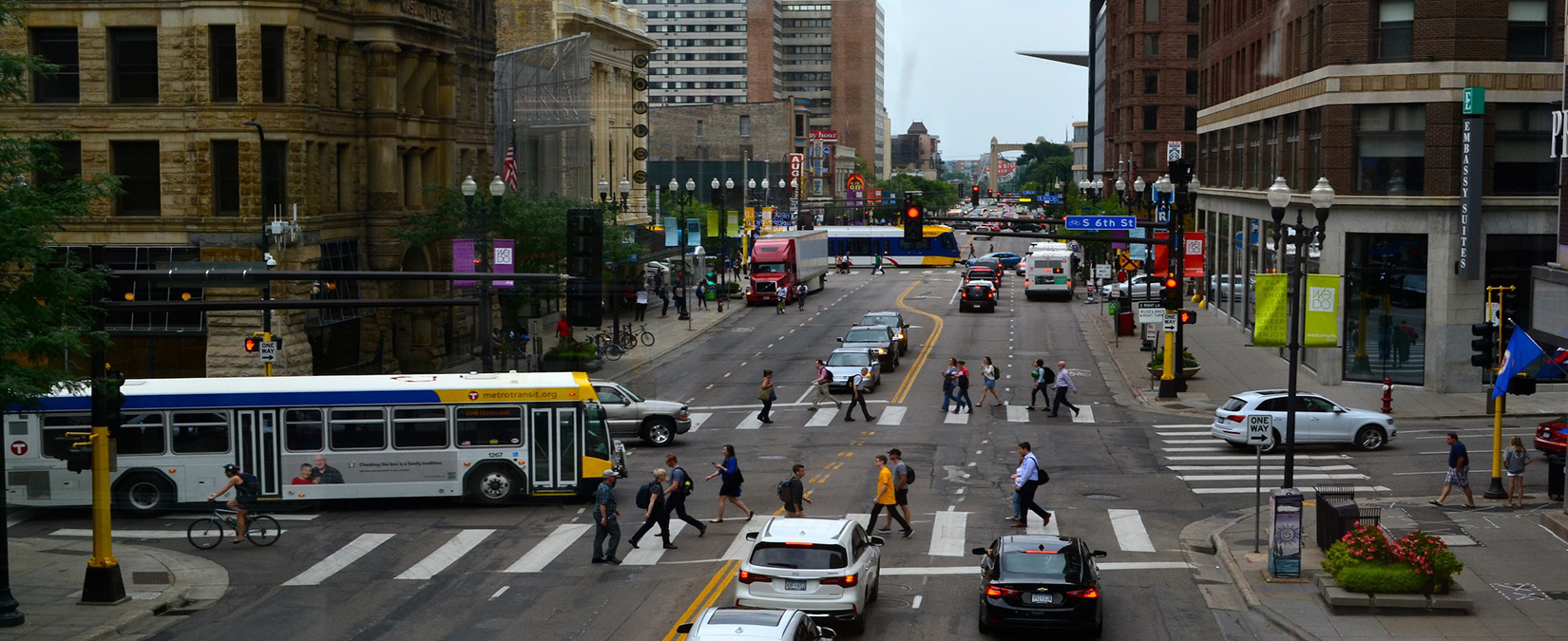Streets may just be the most common public space there is in America given how much room they take up. We use them to move from place to place, to exercise, to walk around for some fresh air, to run errands, to interact or meet up with each other, to peruse shops, and sometimes we just sit outside and watch the world go by. When a public good like this serves us all in so many ways, it’s no wonder we have so many policies, regulations, and discussions about them.

In Minneapolis, a number of key policies guide the use and design of our streets including Complete Streets Policy, Climate Action Plan, Minneapolis 2040 Comprehensive Plan, Vision Zero Action Plan, and the Transportation Action Plan. While these documents have a huge number of details among them, taken together they all articulate our city’s vision that streets are for people. The Complete Streets Policy tells us that streets should prioritize all modes so that people are safe to use them in any mode they choose. Our Climate Action Plan calls out how our streets contribute to climate change and prioritizes people-centered modes over fossil fuels.

Minneapolis 2040 ties together where people live and how they get around to create more people-friendly spaces. Vision Zero Action Plan tells us any harm to a person on a street is unacceptable. Last, but not least, the Transportation Action Plan helps us imagine the most efficient ways for us to get around a dense city in a sustainable way.

Any one of these plans applied as a lens toward the Hennepin Avenue reconstruction project would clearly mean that we must move toward a more pedestrian, bike/roll and transit-friendly corridor that serves all the people who use it, but taken together there really can be no excuse for inaction: Hennepin Avenue must contain a dedicated bus lane, protected bike lanes, and improved pedestrian features. Without a dedicated bus lane to provide faster and reliable service, we are reducing our ability to shift car trips to cleaner modes of travel in order to meet our climate goals, reducing the efficiency of the corridor in a densifying city. Now that the E Line BRT (Bus Rapid Transit) is funded, we don’t want to squander this opportunity for Hennepin Avenue. Without the bike lanes, we are cutting out a key piece of the Transportation Action Plan’s All Ages & Abilities bike network that designates Hennepin Ave South as a low-stress bikeway (protected bike lane or better). Without improved pedestrian features, we will sacrifice the ability to create people-first places where our community will want to linger and spend time and money, increase the probability of physical harm to neighbors crossing the street, and create a street that’s merely a place to pass through on your way somewhere else. Those who object and want to maintain the status quo work against all the ambitious policies the City has approved. On the other hand, organizations like Hennepin for People are organizing residents to hold the City accountable to these adopted policies to ensure a street that’s built for people and for the future.

If we follow all of our policies and are serious about tackling climate change, about creating cities where everyone is safe getting around, about people having options for mobility beyond owning a car, and about creating people-centered places, then the path forward on reconstructing Hennepin is already clear. We have to adhere to our collective vision in our many policies and ensure that these huge public assets are truly for people.
